Links to external sources may no longer work as intended. The content may not represent the latest thinking in this area or the Society’s current position on the topic.
Providing sustainable catalytic solutions for a rapidly changing world
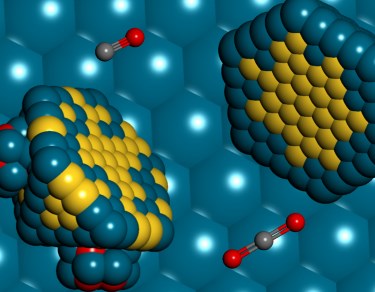
Scientific discussion meeting organised by Professor Graham Hutchings FRS, Professor Richard Catlow FRS and Professor Nicholas Turner
Society is facing challenges in providing sources of clean energy, water and sustainable resources. Catalysis can provide solutions to these grand challenges and this meeting will address modern developments in catalysis that address these crucial targets. We will bring together scientists and engineers across the breadth of catalysis (heterogeneous, homogeneous and bio) bridging the disciplines of chemistry engineering and biology.
The schedule of talks and organiser and speaker biographies are available below. Recorded audio of the presentations are also available below. The meeting papers are now available in Philosophical Transactions of the Royal Society A.
This meeting was followed by a related satellite meeting, 'Catalysis sustaining society's future' at the Royal Society at Chicheley Hall on 10–11 May 2017.
Enquiries: Contact the Scientific Programmes team
Organisers
Schedule
Chair
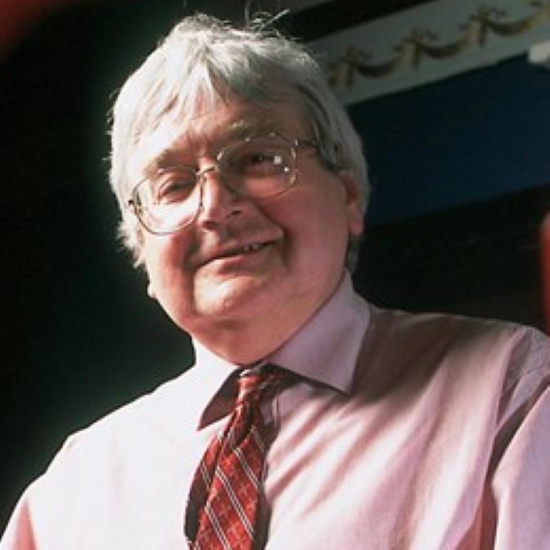
Sir Richard Catlow FRS, Cardiff University and University College London, UK

Sir Richard Catlow FRS, Cardiff University and University College London, UK
Richard Catlow is developing and applying computer models to solid state and materials chemistry: areas of chemistry that investigate the synthesis, structure and properties of materials in the solid phase. By combining his powerful computational methods with experiments, Richard has made considerable contributions to areas as diverse as catalysis and mineralogy. His approach has also advanced our understanding of how defects (missing or extra atoms) in the structure of solids can result in non-stoichiometric compounds. Such compounds have special electrical or chemical properties since their contributing elements are present in slightly different proportions to those predicted by chemical formula. Richard’s work has offered insight into mechanisms of industrial catalysts, especially involving microporous materials and metal oxides. In structural chemistry and mineralogy. Simulation methods are now routinely used to predict the structures of complex solids and silicates, respectively, thanks to Richard’s demonstrations of their power. Richard was Foreign Secretary of the Royal Society from 2016 until 2021. He has for many years been involved in the exploitation of High Performance Computing in Modelling Materials.
| 09:05 - 09:30 |
Non-thermal plasma activated catalysis for low temperature operation
Hybrid non-thermal plasma catalysis has a significant potential to provide a low energy pathway to activate molecules and catalysts to enable processes to operate at lower temperatures than would occur if activated thermally. This presentation will show how plasma activation can be utilised to promote the water gas shift reaction, deNOx reactions and methane combustion. The role of the plasma will be explored and the mechanism of thermal vs plasma activated processes will be shown. 
Professor Chris Hardacre, University of Manchester, UK

Professor Chris Hardacre, University of Manchester, UKChris Hardacre is Head of the School of Chemical Engineering and Analytical Science at the University of Manchester. He obtained a PhD from Cambridge University in 1994 and was an SERC research and a junior research fellow at Emmanuel College, Cambridge. He moved to Queen’s University, Belfast in 1995 and in 2003, he was appointed as Professor of Physical Chemistry and became Director of the Centre for the Theory and Application for Catalysis. In 2016, he moved to the University of Manchester. He is a Co-PI for the UK Catalysis Hub and has research interests in the use of kinetic and spectroscopic techniques to determine gas phase and liquid phase heterogeneously catalysed reaction mechanisms, development of new catalytic processes for bulk and fine chemical applications and fuel cells. He has published over 370 papers, nine patents and six book chapters. |
|
|---|---|---|
| 09:45 - 10:15 |
Alkane partial oxidation using dioxiranes in solution at low temperatures
Direct catalytic partial oxidation of alkanes, such as methane, in the gas phase can often require high temperatures for activation of the strong aliphatic C–H bond. High temperature reaction conditions can frequently lead to gas phase radical reactions, with intrinsically low selectivity and poor control of yields. However, partial oxidation catalysts capable of efficiently operating at low temperatures may limit the over-oxidation of the alkane substrate and thereby improve selectivity. Frequently, when supported transition metal catalysts are used for C–H bond activation, irreversible deactivation via metal reduction, particle sintering, or coke deposition is observed. Therefore, this study focuses on examining alkane oxidation using completely metal-free organocatalysts, dioxiranes, in solution at low temperatures. Typical dioxiranes, such as dimethyldioxirane and methyl(trifluoromethyl)dioxirane, can be prepared by oxidation of the parent ketone so that the dioxirane can be added as isolated species, however, in this manner the dioxirane serves only as a stoichiometric oxidant. This work aims to generate dioxirane in situ so that the process can be catalytic with respect to the ketone using H2O2 as the stoichiometric oxidant. 
Dr Sara Yacob, Exxon Mobil, USA

Dr Sara Yacob, Exxon Mobil, USASara Yacob completed her undergraduate work at The University of Michigan in Ann Arbor, Michigan where she majored in Chemical Engineering. As an undergraduate researcher under the direction of Dr Omolola Eniola Adefeso she worked on using alginate biogels as non-immunogenic reactive substrates for neutrophil adhesion during the inflammation cascade. After graduation she worked for 2 years at the Dow Corning Corporation (now Dow Chemical Company) as a process design and manufacturing engineer. She completed her graduate degree in Chemical and Biological Engineering at Northwestern University under the direction of Dr Justin Notestein. Her gradate research investigated catalytic routes to methyl methacrylate via ethanol carbonylation to yield propionates. Upon graduation she joined the ExxonMobil Research and Engineering Company. Her current research interests include low temperature selective partial oxidative conversion of alkanes and mechanistic studies to assess the catalytic properties of noble metal supported oxide catalysts. |
|
| 11:00 - 11:45 |
TiO2 and ZrO2 in biomass conversion: why catalyst reduction helps
Reducible oxides are considered to be more active than non-reducible oxides in catalytic conversion of biomass to biofuels, but the reasons are unclear and are the object of this talk. The properties of anatase TiO2 and tetragonal ZrO2 (101) surfaces have been studied using DFT+D calculations with inclusion of dispersion forces. The attention is on the role of surface reduction, either by creation of oxygen vacancies, or by treatment in hydrogen. The presence of reduced centers on the surface of titania or zirconia (either Ti3+ or Zr3+ ions or oxygen vacancies) results in lower barriers and more stable intermediates in two key reactions in biomass catalytic conversion: ketonization of acetic acid and deoxygenation of phenol. The role of supported Ru nanoparticles is also considered. They favour H2 dissociation and hydrogen spillover, resulting in hydroxylated surfaces. H2O desorption from the hydroxylated surfaces may be a relevant mechanism for the regeneration of oxygen vacancies, in particular on low-coordinated sites of oxide nanoparticles. Finally, the role of nanostructuring on oxide reduction is discussed. ZrO2 nanoparticles of diameter of about 2 nm have completely different behaviour compared to the bulk oxide, and are much more reducible. Nanostructured zirconia has a similar behaviour as titania. 
Professor Gianfranco Pacchioni, Università di Milano-Bicocca, Italy

Professor Gianfranco Pacchioni, Università di Milano-Bicocca, ItalyGianfranco Pacchioni received his PhD at the Freie Universität Berlin in 1984. He is active in the field of modeling of heterogeneous catalysis and oxide materials. He worked at the IBM Almaden Research Center, the Technical University of Munich, the Fritz-Haber Institute (Berlin), etc. He is Full Professor at the University of Milano-Bicocca where he has been Vice Rector for Research (2013-2019) and Director of the Department of Materials Science (2003-2009). Editor-in-chief of the Journal of Physics: Condensed Matter (Institute of Physics, UK); co-author of about 550 papers (>30000 citations; h-index WoS 89; Google Scholar 100); he has given about 500 invited talks. He received several awards (Humboldt Award, Pascal Medal, etc.); Fellow of the Accademia Nazionale dei Lincei (2014), the Academia Europaea (2012), the European Academy of Sciences (2009). |
|
| 11:45 - 12:15 |
A deeper understanding of structured Co-Fischer Tropsch Synthesis catalysts via chemical tomography
The imaging of catalysts under reaction conditions has advanced significantly in recent years. The combination of the computed tomography (CT) approach with methods such as X-ray diffraction (XRD), X-ray fluorescence (XRF), and X-ray absorption near edge spectroscopy (XANES) now enables local chemical and physical state information to be extracted from within the interiors of materials which are, by accident or design, inhomogeneous. The spatially resolved signals obtained reveal information otherwise lost in bulk measurement. Studying intact materials rather than idealised powders allows for behaviour under industrially relevant conditions to be observed. Such methods have been applied to study catalytic systems over a range of length scales (from ~1 µm to 10 mm). On small length scales (<200 µm), X-ray transmission at ‘low’ energies (<10 keV) is possible and allows for performing multi-modal imaging (i.e. combined spectroscopic and diffraction imaging) on packed-bed micro-reactors (Co/SiO2 FTS catalysts) enabling for a more inclusive correlation of catalyst composition with performance. On larger length scales (i.e. >few mm) high energy scattering computed-CT enables large/dense objects to be studied i.e. 3 mm Co/g-Al2O3 pellets. This information is vital to rational catalyst and reactor design that cannot be obtained by conventional bulk measurements. 
Professor Andy Beale, University College London, UK

Professor Andy Beale, University College London, UKAndrew M Beale is an EPSRC Early career Fellow and Professor of Inorganic Chemistry at UCL based at the Research Complex at Harwell, Rutherford Appleton Laboratories in Harwell, Didcot. He is also co-director of the spin-off company Finden Ltd. Current research interests fall mainly into the category of catalysis and solid-state chemistry particularly studied under dynamic or operando conditions. Specific areas of interest include the development of novel imaging techniques (‘multimodal’) for the study of single catalyst bodies/grains under real reaction conditions, determining the nature of the active site and reaction mechanism in catalysts for NOx abatement, methane activation/upgrading, unravelling the self-assembly mechanism of the microporous materials and the characterisation of catalytically active supported nanoparticles. |
Chair
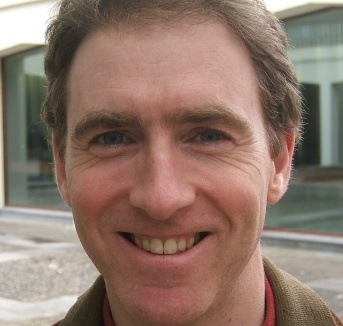
Professor Adrian Mulholland, University of Bristol, UK

Professor Adrian Mulholland, University of Bristol, UK
Adrian Mulholland’s research focuses on the investigation of mechanisms of biological catalysis, and biomolecular structure and function more generally, by computational modelling and simulation. His work has ranged from studies of drug resistance, including antimicrobial resistance, to biosynthesis, synthetic biology, enzyme engineering and thermoadaptation, to investigations of quantum tunnelling and protein dynamics in enzyme catalysis. A central theme in his research is the development and application of combined quantum mechanics/molecular mechanics (QM/MM) techniques, in particular for the investigation of enzyme-catalysed reaction mechanisms. He has a strong interest in the application of high performance computing (HPC), particularly for biomolecular simulations. Following work at ICI Pharmaceuticals, he obtained his D. Phil. with Prof. Graham Richards at Oxford, and then worked as a Wellcome Trust Fellow with Prof. Martin Karplus at Harvard. He is Head of Physical and Theoretical Chemistry at Bristol. He is Chair of CCP-BioSim (the UK Collaborative Computational Project for Biomolecular Simulation, ccpbiosim.ac.uk) and HECBioSim (the UK High End Computing Consortium for Biomolecular Simulation, hecbiosim.ac.uk), and of the UK CCP Steering Panel (see ccp.ac.uk).
| 13:30 - 14:00 |
Novel catalysts for H2O2 synthesis and their utilisation in wastewater treatment
The direct synthesis (DS) of hydrogen peroxide from H2 and O2 presents an atom efficient route to an important commodity chemical if the reaction proceeds with high H2 selectivity. Supported bimetallic nanoparticles are known to be highly active and selective for this reaction. The composition of the particles, catalyst support and reaction conditions result in catalysts with <99% H2 selectivity, and materials which no not over hydrogenate the H2O2 formed to water. One potential application of the DS process is to produce H2O2 in quantities sufficient to eradicate bacteria present in a greywater stream. Roughly 50% of the average household’s water is greywater (effluent originating from washing machines, dishwashers etc ) and it’s possible a small system capable of producing H2O2 in this stream would be enough to reduce harmful microorganisms present so the water can be reused within the household. For such system to be viable, the H2O2 would need to be formed under challenging conditions (ambient temperature, pressure in a water only solvent system) and it is likely new catalyst formulations will be required (where H2O2 is catalytically decomposed to radicals). Advances towards these targets will be discussed in this lecture. 
Dr Jenny Edwards, University of Cardiff, UK

Dr Jenny Edwards, University of Cardiff, UKJennifer Edwards is a senior research fellow in the Cardiff Catalysis Institute, based in the School of Chemistry at Cardiff University. She has published over 90 papers and patents, and has a particular interest in the design and application of precious metal catalysts. Her efforts in the field have been recognized by the International precious metal institute (Carol Tyler award 2011) and the German Catalysis network Unicat (Clara Immerwahr award 2013). She was a finalist in the Science category for the Women of the Future awards in 2015. |
|
|---|---|---|
| 14:15 - 14:45 |
Mechanistic insights into catalytic synthesis of hydrogen peroxide over supported metals

Professor Matt Neurock, University of Minnesota, USA

Professor Matt Neurock, University of Minnesota, USAMatt Neurock is the Shell Professor of Chemical Engineering and Materials Science at the University of Minnesota. He received his BS and PhD degrees in Chemical Engineering from Michigan State University and the University of Delaware, respectively. He worked as a postdoctoral fellow at the Eindhoven Institute of Technology, visiting Scientist at DuPont and Professor of Chemical Engineering at the University of Virginia before moving to Minnesota. He has developed and applied computational methods to elucidate catalytic and electrocatalytic reaction mechanisms, and the sites and environments that carry out reactions for various catalytic reactions. He has received various awards for his work including the Robert Burwell Lectureship from the North American Catalysis Society, the R.H. Wilhelm Award in Chemical Reaction Engineering from the American Institute of Chemical Engineers and the Paul H. Emmett Award in Fundamental Catalysis from the North American Catalysis Society. He has co-authored over 240 papers, two patents and two books. |
|
| 15:30 - 16:00 |
Photocatalysis for combined destruction of organic and inorganic pollutants from aqueous environments
The lecture will attempt to provide an overview of the latest developments in the rapidly expanding field of water purification via photocatalytic methods and in particular, focus on the removal of nitrate ions with simultaneous removal of the hole scavenger (organic moiety). While many of the issues associated with provision of potable water in the developing world may be resolved by the use of simple physical methodologies such as filtration, many of the issues associated with water purity in the developed world involve complex, stable molecules present at low concentrations but nonetheless capable of producing toxic effects in plants and animals and which require removal technologies which are more demanding. Photocatalytic methods can be operated remotely and initial studies show minimal production of undesired side products. Studies using titania alone as a photocatalyst show limitations, not only in terms of the slow rate of photoreduction of nitrate but also in terms of selectivity and the need to employ radiation in the UV region due to the magnitude of the band gap. The key challenges may be defined as: reduce band gap/increase absorption in visible region, increase adsorption capacity/access to surface active sites, reduce rate of hole/electron recombination, enhance activity. 
Professor Jim Anderson, University of Aberdeen, UK

Professor Jim Anderson, University of Aberdeen, UKJames Anderson holds a Sixth Century Chair in Materials and also a Chair in Chemical Engineering at The University of Aberdeen where he heads the Surface Chemistry and Catalysis Group within the Materials and Chemical Engineering unit in the School of Engineering. He has previously held the posts of Chairman of the UK SURCAT group (RSC Surface and Reactivity group) and secretary of EFCATS (European Federation of Catalysis Societies) and is currently UK representative and treasurer of IACS (International Association of Catalysis Societies). He is author/co-author of over 200 scientific papers. His research interests include: use of vibrational spectroscopy to examine surfaces and interfaces, with a focus on hydrocarbon (including biomass) activation (reforming and hydroisomerisation), acetylene, alkyne and carbon monoxide hydrogenation and photocatalytic water treatment. |
Chair
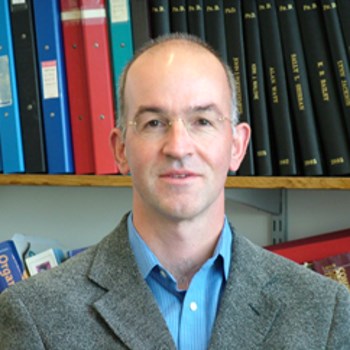
Professor Nicholas Turner, University of Manchester, UK

Professor Nicholas Turner, University of Manchester, UK
Nick Turner obtained his DPhil in 1985 with Professor Sir Jack Baldwin and from 1985-1987 was a Royal Society Junior Research Fellow, spending time at Harvard University with Professor George Whitesides. He was appointed lecturer in 1987 at Exeter University and moved to Edinburgh in 1995, initially as a Reader and subsequently Professor in 1998. In October 2004 he joined Manchester University as Professor of Chemical Biology where his research group is located in the Manchester Institute of Biotechnology Biocentre (MIB: www.mib.ac.uk). He is Director of the Centre of Excellence in Biocatalysis (CoEBio3) (www.coebio3.org) and also a co-founder and Scientific Director of Ingenza (www.ingenza.com), a spin-out biocatalysis company based in Edinburgh and more recently Discovery Biocatalysts. He is a member of the Editorial Board of ChemCatChem and Advanced Synthesis and Catalysis. His research interests are in the area of biocatalysis with particular emphasis on the discovery and development of novel enzyme catalysed reactions for applications in organic synthesis. His group are also interested in the application of directed evolution technologies for the development of biocatalysts with tailored functions.
| 09:00 - 09:30 |
Selective and robust polymerisation catalysts for sustainable bioplastics
As the global demand for plastics is set to triple over the next 30 years, decoupling plastics production from fossil feedstocks will become an increasingly important challenge. Therefore, the use of bio-based resources for the production of plastics is highly active area of research in both academia and industry. Polylactide (PLA), produced via the catalytic ring-opening polymerization (ROP) of lactide, is one of the most promising alternatives to petrochemically-derived plastics for commodity applications such as packaging and fibres. Progress in developing new stereoselective catalysts for ROP of lactide has been impressive, but industrial application of these catalysts is currently limited. This talk will focus on the development of zirconium-based catalysts for industrial PLA production. The design of new stereoselective catalysts, understanding of the mechanism of stereocontrol and the development of new synthetic strategies for control of polymer architecture will be discussed in the context of broadening the scope of PLA as a commodity bio-based plastic. 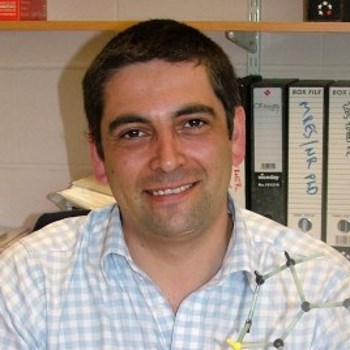
Professor Matthew Davidson, University of Bath, UK

Professor Matthew Davidson, University of Bath, UKMatthew Davidson is Whorrod Professor of Sustainable Chemical Technologies and Director of the Centre for Sustainable Chemical Technologies at the University of Bath, UK. His research focuses on the application of molecular chemistry and catalysis to sustainable chemical processes such as manufacture of renewable fuels, chemicals and plastics. He graduated in Chemistry from the University of Wales, Swansea and received a PhD from the University of Cambridge. Following a Research Fellowship at St John’s College, Cambridge, he held Lectureships in Chemistry at the University of Cambridge and Durham University before being appointed to a Chair of Chemistry at Bath in 1999. He is a Fellow of the Royal Society of Chemistry and a previous recipient of its Harrison Memorial Prize. |
|
|---|---|---|
| 09:45 - 10:15 |
Integrating biocatalyst and process design
Biocatalysis uses enzymes for chemical synthesis and production, offering selective, safe and sustainable catalysis. While today the majority of applications are in the pharmaceutical sector, new opportunities are arising every day in other industry sectors, where production costs become a more important driver. In the early applications of the technology it was necessary to design processes to match the properties of the biocatalyst. With the advent of protein engineering that paradigm has changed into one where the biocatalyst can be designed to match the process. Progress has been spectacular, but in recent years the route to industrial implementation has become increasingly dependent upon timely protein engineering to enable the tailored design of a given biocatalyst. Today a new era is entered, where the effectiveness with which such protein engineering is achieved becomes critical to implementation. In this lecture two methods to improve this will be described. The first involves the development of target-setting based on process requirements to guide protein engineering. The second involves the simultaneous solution of the biocatalyst and process design problems. Illustration of both approaches will be given in the lecture. 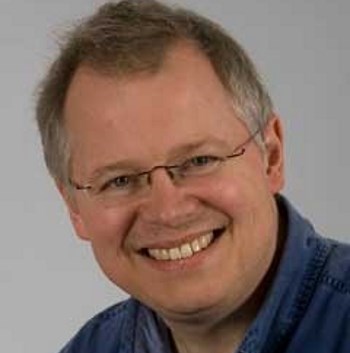
Professor John Woodley, Technical University of Denmark, Denmark

Professor John Woodley, Technical University of Denmark, DenmarkJohn M Woodley (originally from the UK) is currently Professor of Chemical Engineering at the Department of Chemical and Biochemical Engineering at the Technical University of Denmark (DTU, Lyngby, Denmark), a position he took up in 2007, following a career at University College London (UCL, London, UK). His research is focused on bioprocess engineering, design, intensification, scale-up and implementation. Aside from experimental studies the group also has interests in thermodynamics and kinetic modelling as tools to assist in techno-economic evaluation of bioprocesses. He has published over 170 ISI journal papers, 60 conference proceedings, 20 book chapters and 450 conference abstracts. He has industrial experience from ICI (UK) where he held one of the first two Academic Research Fellowships (1989-1994). He sits on several scientific advisory and editorial boards. In 2010 he was a joint recipient of the Rita and John Cornforth Award of the RSC (UK), in 2014 he was a Gambrinus Forum lecturer (TU Dortmund, Germany) and in 2016 he was the co-chair of the Biocatalysis Gordon Research Conference (USA). He is a Chartered Engineer, a Fellow of the Institution of Chemical Engineers (UK) and a Fellow of the Royal Academy of Engineering (UK). |
|
| 11:00 - 11:30 |
Protein engineering as a tool to create highly selective transaminases and application of biocatalysts in cascade reactions
This talk will highlight principle strategies and current challenges in enzyme discovery and protein engineering. These will be exemplified for amine transaminases (ATA) where Bornscheuer’s group took advantage of the vast number of protein sequences available from databases to facilitate the discovery of novel enzymes and to guide the design of 'small, but smart' mutant libraries. For the synthesis of chiral amines, Bornscheuer performed an in silico analysis and identified a toolbox of novel (R)-selective ATAs as well as (S)-selective enzymes from a structure-guided search. More recently, his group could engineer (S)-selective ATA for the acceptance of bulky ketones for the asymmetric synthesis of a set of important chiral amines. The group also established cascade reactions and developed for instance the efficient synthesis of ε-caprolactone-oligomers through combination of three enzymes. 
Professor Uwe Bornscheuer, University of Greifswald, Germany

Professor Uwe Bornscheuer, University of Greifswald, GermanyUwe T Bornscheuer studied chemistry and completed his doctorate in 1993 at the Uni-versity of Hannover (Germany). He then performed a postdoc at the University of Nagoya (Japan). In 1998, he completed his Habilitation at the University of Stuttgart (Germany). He has been Professor at the Institute of Biochemistry at the University of Greifswald since October 1999. In 2008, he received the BioCat2008 Award for his innovative work on tailored biocatalysts for industrial applications and several awards (Normann Medal, Chevreul Medal, Stephen S. Chang Award) for his achievements in the area of enzymatic lipid modifications. He has published >375 research papers, >30 book chapters and filed >40 patent applications. His current research interest focusses on the discovery and protein-engineering of various enzymes for organic synthesis and lipid modification using methods ranging from rational protein design to high-throughput screening methods for biocatalyst discovery including the development of enzyme-cascade reactions. |
|
| 11:45 - 12:15 |
Efficient utilization of renewable feedstocks: the role of catalysis and process design
Biomass presents a promising renewable feedstocks for production of fuels and chemicals. In recent years, the interest in a tailored valorisation of lignocellulose, the major component of biomass, has increased significantly. However, selective transformations are hampered by the high degree of functionalization of renewable feedstocks. Indeed, solid catalysts in current refinery technologies have been optimized to functionalize non-polar substrates in gas-phase reactions at elevated temperature. In contrast, renewable feedstocks exhibit a multitude of functional groups necessitating selective de-functionalization strategies in low-temperature liquid phase reactions with high polar solvents. Concepts such as selective adsorption, deoxydehydration as novel catalytic strategy, as well as solid molecular catalysts in H2 production from formic acid as well as CO2 activation will be discussed. 
Professor Regina Palkovits, RWTH Aachen University, Germany

Professor Regina Palkovits, RWTH Aachen University, GermanyRegina Palkovits is Full Professor for Heterogeneous Catalysis & Chemical Technology at RWTH Aachen University. She graduated in Chemical Engineering from Technical University Dortmund in 2003 and carried out her PhD under the supervision of Professor Ferdi Schüth at the Max-Planck-Institut für Kohlenforschung until 2006. Afterwards, she joined the group of Professor Bert Weckhuysen at Utrecht University as a postdoctoral fellow. In 2008, she return as a group leader to the Max-Planck-Institut für Kohlenforschung and since 2010 she has been Professor at RWTH Aachen University. |
Chair
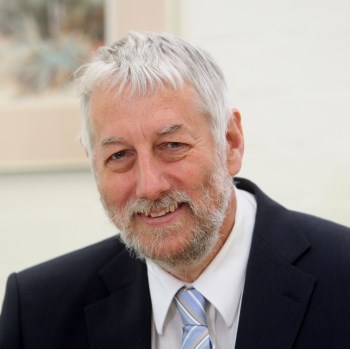
Professor Graham Hutchings CBE FRS, Cardiff University, UK

Professor Graham Hutchings CBE FRS, Cardiff University, UK
Graham Hutchings, born 1951, studied chemistry at University College London. His early career was with ICI and AECI Ltd where he became interested in heterogeneous catalysis initially with oxides and subsequently with gold catalysis. In 1984 he moved to academia and has held chairs at the Universities of Witwatersrand, Liverpool and Cardiff and currently he is Director of the Cardiff Catalysis Institute. He was elected a Fellow of the Royal Society in 2009, and he was awarded the Davy Medal of the Royal Society in 2013.
| 13:30 - 14:00 |
Computer-aided design of novel catalysts for sustainable energy production
Computer modelling is an extremely useful tool to investigate structures and processes that are inaccessible experimentally and to help interpret experiment. Furthermore, computational techniques are increasingly truly predictive in identifying promising materials and processes for specific applications. Here, de Leeuw presents a computational study of promising catalysts for sustainable energy production. Carbon dioxide capture and utilisation is gaining significant attention, not only driven by environmental factors but also by the potential to exploit it as chemical feedstock. One plausible utilisation route is its conversion to small organic molecules as pre-cursors to fuels and chemicals, but CO2 is thermodynamically very stable and its reduction is energy-intensive. However, CO2 conversion does take place under mild conditions in chemoautotrophic bacteria catalysed by enzymes. These enzymes often contain Fe4S4 cubane clusters, which have been shown to act as electron-transfer sites, but they can also be catalytically active centres for molecule transformations. A number of iron sulphide mineral are structurally similar to this cluster – a fact that suggests that they may well be a suitable heterogeneous catalyst. Here, de Leeuw presents a combined theoretical and experimental investigation of cubane-structured iron sulphide minerals as potential catalyst in the transformation of CO2 into organic molecules. 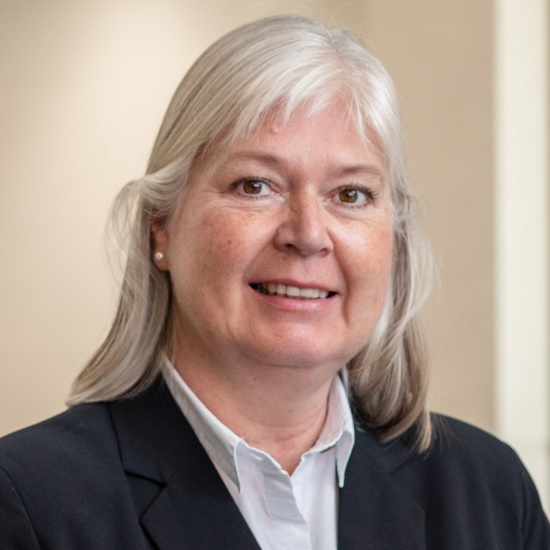
Professor Nora H de Leeuw, University of Leeds, UK

Professor Nora H de Leeuw, University of Leeds, UKNora de Leeuw is Professor of Computational Chemistry at the University of Leeds, UK, and she also holds a Chair position in Theoretical Geochemistry and Mineralogy at Utrecht University in the Netherlands. Her research is focused on the atomic-level understanding of composite materials and complex processes in biomedical applications and materials for sustainable energy applications, including novel catalysts for CO2 conversion to synthetic fuels, and materials relevant for nuclear energy, fuel cell and battery applications. Nora has held a number of independent research fellowships, including an EPSRC Advanced Research Fellowship (2002), Royal Society Wolfson Research Merit Award (2009), Royal Society Industry Fellowship (2012) and AWE William Penney Fellowship (2014). She is a Fellow of the Royal Society of Chemistry, elected Fellow of the Learned Society of Wales and elected Member of Academia Europaea. |
|
|---|---|---|
| 14:15 - 14:45 |
Catalyst control to allow selective polymerizations from mixtures: a useful strategy to deliver future materials?
Catalysis plays a central role in delivering materials from renewable resources and this lecture addresses the alternating copolymerization of epoxides and carbon dioxide. Central to applying such materials is to understand and improve the physical-chemical properties. Here, the opportunity to use homogeneous catalysts to deliver block sequence controlled materials from mixtures of monomers is examined. The strategy applies a single catalyst and mixtures of epoxides, carbon dioxide, anhydrides and lactones to prepare materials with controllable and predictable block sequences. The factors underpinning catalytic selectivity are examined by both experimental and theoretical methods. Furthermore the catalysis is exploited to prepare oxygenated polymers suitable for higher end commodity applications such as thermoplastic elastomers and shape memory materials. The lecture the potential for controlled polymerization catalysis to deliver new sustainable materials showing high performances for a range of applications. 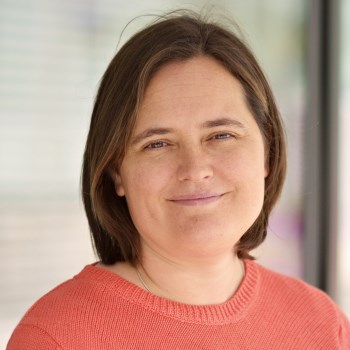
Professor Charlotte Williams FRS, University of Oxford, UK

Professor Charlotte Williams FRS, University of Oxford, UKCharlotte Williams (Department of Chemistry, Oxford University) researches catalysis that allow renewable resources to be used to make polymers, composites and fuels. Her research includes the development of homogeneous catalysts for polymerizations of plant-derived resources and carbon dioxide to deliver oxygenated polymers. She also investigates colloidal nanoparticle catalysts for the hydrogenation of carbon dioxide or syn-gas to methanol and dimethyl ether. She is the founder of econic technologies (econic-technologies.com) which commercializes catalysts for carbon dioxide/epoxide copolymerizations. Her work has been recognised by the RSC Corday Morgan Prize (2015) and the WISE Tech Start Up Award (2014). |
|
| 15:30 - 16:00 |
Sustainable industrial catalytic processes: the importance of innovation in large scale chemical manufacture
Developing sustainable processes for industry is a key target for both academic and industrial researchers. There are a small number of large sale chemicals that account for the majority of greenhouse gas emissions from the chemical industry, such as ammonia, ethylene or methanol. This talk will discuss the concept of sustainability in an industrial context and highlight progress towards improved sustainability in large scale chemical processes such as methanol synthesis and nitric acid manufacture. 
Dr Paul Collier, Johnson Matthey, UK

Dr Paul Collier, Johnson Matthey, UKDr Collier is a Research Fellow at Johnson Matthey and leads its research activities at Harwell and is also responsible for corporate analytical teams in NMR and XPS at the central research facility at Sonning Common. He has led R&D teams looking at methane activation and MOF research along with diverse projects in catalysis and zeolite research. In addition to this he has led a product development team based in the UK and USA looking at the scale-up and commercialisation to multi-tonne quantities of new catalysts. Dr Collier’s PhD was in precious metal nanocatalysis at Liverpool University and PDRA with Prof Hutchings at Cardiff University. With 16 years industrial experience and over 40 publications and patents Dr Collier has significant experience in science and technology in an applied setting. |
|
| 16:15 - 17:00 |
Meeting Overview: future directions led by Professor Sir John Meurig Thomas FRS (Cambridge) and Professor Ted Oyama (University of Tokyo/Crest)
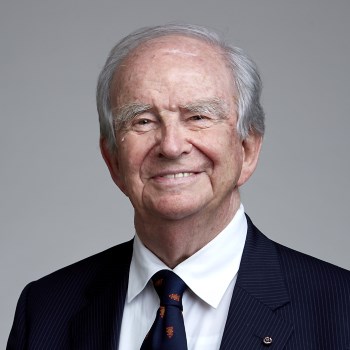
Professor Sir John Meurig Thomas HonFREng FRS, University of Cambridge, UK

Professor Sir John Meurig Thomas HonFREng FRS, University of Cambridge, UKJohn Meurig Thomas is a former Director of the Royal Institution (RI) of Great Britain, London, and a former Head of the Department of Physical Chemistry, and former Master of Peterhouse, University of Cambridge. He was educated in the University of Wales (Swansea). He taught and researched at Bangor and Aberystwyth for 20 years prior to being invited to Cambridge in 1978. His term as Director of the RI started in 1986. For over 50 years he has researched widely in solid-state chemistry and is best known for his pioneering work in various kinds of chemical electron microscopy, for his major contributions to heterogeneous catalysis, and for transforming the study and use of zeolites and other nanoporous materials. He has also elucidated the role of crystalline imperfections in governing the electronic, photochemical and photophysical properties of organic molecular crystals. His work on single-site heterogeneous catalysts has led to many practical and commercial advances in green conversions. John Meurig Thomas is a Fellow of the Royal Society. 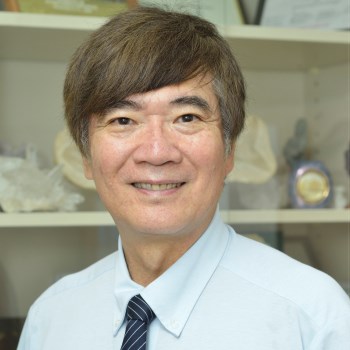
Professor Ted Oyama, CREST, University of Tokyo, Japan

Professor Ted Oyama, CREST, University of Tokyo, JapanS. Ted Oyama earned his bachelor’s degree in chemistry and chemical engineering at Yale University in 1976 working with Gary Haller and his doctorate in chemical engineering at Stanford University in 1981 with Michel Boudart. He currently holds dual appointments in the Chemical Systems Engineering Department at the University of Tokyo and the Chemical Engineering Department at Virginia Tech. His research interests are in the areas of catalytic fuel processing, biomass conversion, steam reforming, gas separation membranes, and membrane reactors. He carries out research on the development of new materials, including novel catalytic materials such as phosphides and advanced inorganic membranes. He concentrates on studying the mechanisms of reaction and permeance using kinetic tools coupled with in situ spectroscopy. He is a recipient a 2009 Humboldt Senior Researcher Prize, 2012 Fellow of the American Chemical Society (ACS), the 2014 ACS Distinguished Researcher Award, the 2014 ACS Storch Award, and 2016 Fellow of the American Association for the Advancement of Science. He served as 2009 Chair of the Division of Petroleum Chemistry of the American Chemical Society, and currently is editor of the Journal of Catalysis, a highly-ranked chemical engineering journal. He has published over 230 refereed papers, seven edited books, and one monograph. |
